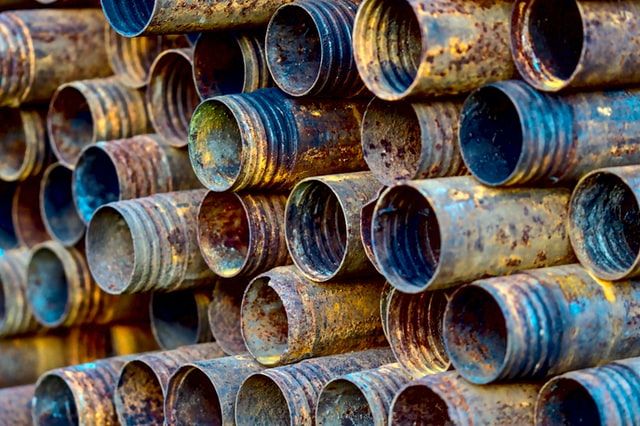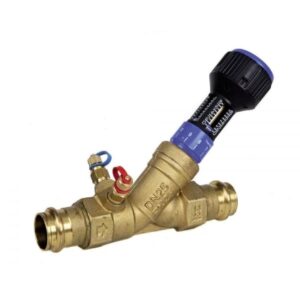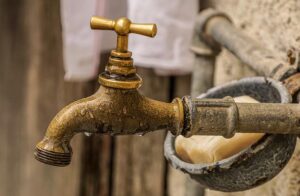If you’ve been shopping around recently for pipe, tube & fittings for your latest plumbing project, you’ve likely come across the term ‘DZR/Dezincification Resistant’ and wondered:
What causes dezincification of brass?
And what is it anyway?
To answer these crucial questions and help you fully understand dezincification, at Plumbing Superstore we’ve created an in-depth guide to the dezincification process and its importance.
Here’s what we have in store for you.
Table of contents:
- What is dezincification?
- How does dezincification happen?
- What does Dezincification Resistant mean?
- How to prevent dezincification of brass
- How to clean heavily corroded brass
- The importance of understanding dezincification
What is dezincification
In general terms, dezincification, also known as the leaching of zinc, is a chemical process which involves the selective loss of zinc from an alloy.
Specifically, it’s an electrochemical reaction between zinc and certain chemicals which are found in water, which results in a spongy, weak layer of copper on the surface of the metal. This layer usually ranges in colour from green to red and resembles brass rust.
The two main types of dezincification are plug-type dezincification and layer-type dezincification.
Here’s what each one entails:
Plug-type dezincification results in deep cracks or holes in fittings and valves.
In contrast, layer-type dezincification reduces the thickness of fittings and valves uniformly, weakening their surface without necessarily creating any cracks.
You might be wondering:
Which material can dezincification take place in?
The answer is quite straightforward – brass. Widely used in plumbing materials, brass is an alloy of copper and zinc. And, dezincification occurs most commonly in brass alloys with more than 15% zinc, so brass composition plays a key role.
For reference, the lowest content of zinc in brass is 5% and the highest is around 35%.
How does dezincification happen?

Zinc is a highly reactive metal, which readily forms compounds with various acids, alkalis and other non-metals. At the same time, it has weaker atomic bonds than copper.
On the other hand, copper is more noble, which makes it more resistant to corrosion than zinc.
Now:
Dezincification is often caused by contact with water which:
- Contains carbon dioxide or oxygen (which causes brass oxidation);
- Is slightly acidic, with low salt content;
- Is soft, with low pH and low mineral content;
- Is high in chloride.
-
In contrast, neutral or alkaline waters, which are high in salt and possibly have a higher temperature, tend to bring about faster, localised, plug-type dezincification.
What does Dezincification Resistant mean?
As you can see, dezincification is a serious problem for fittings, valves and various other HVAC applications.
What’s the solution?

Step in Dezincification Resistant (DZR) or DR brass. This is, quite literally, a type of brass which is resistant to dezincification. DZR is manufactured with the addition of small quantities of up to 0.15% of arsenic or slightly larger quantities of up to 0.3% of nickel. These two chemical elements act as dezincification inhibitors by creating film coating.
It might come as a surprise given the need for additives, but it’s actually easier to manufacture DZR than normal brass!
What’s more:
According to The Water Supply (Water Fittings) Regulations 1999 in the UK, all concealed water fittings or mechanical backflow prevention devices which are not terminal fittings must be manufactured from material that is resistant to dezincification. Alternatively, gunmetal may be used.
In addition, these fittings must be clearly marked with the letters “CR” (Corrosion Resistant) or DZR.
How to prevent dezincification of brass
Due to the highly negative effects that dezincification has on brass, it’s vital to prevent it by any means.
Now:
The most obvious way to do so when it comes to HVAC and plumbing applications is to use DZR fittings and valves.
But wait! There’s more:
Firstly, you can use a brass alloy with a zinc content of less than 15%, as this type is highly resistant to dezincification.
Secondly, make sure all brass products and fittings are clean and free from dust. When handling them, always use gloves in order to prevent harmful contact with acids and salts. In addition, thoroughly rinse brass products after cleaning them to get rid of any leftover residues which might otherwise react with the copper and create greenish compounds.
Thirdly, carefully regulate the water temperature and its contents. High water temperatures of over 70°C, low bicarbonate water contents, and high chloride contents are all conducive to dezincification.
Lastly, you can dose corrosion inhibitors, which are highly effective in preventing brass corrosion.
How to clean heavily corroded brass
You might be able to deal with cases of mild dezincification with abrasive polishing, a bit like tarnishing silver.
However, that’s not really an option for fittings and valves since they’re typically hidden from plain sight, making it difficult to catch the effects of dezincification early on.
Chances are:
By the time you’re aware of it, the process will be quite advanced, at which point all you can do is replace the damaged valve or fitting and adjust the water to condition to prevent dezincification from occurring again.
The importance of understanding dezincification

Dezincification can cause massive damage to pretty much anything made from brass, whether it’s a ball valve or a French horn.
By being aware of what dezincification is, how it works and, most importantly, what you can do to prevent it, you can save yourself a world of trouble and a massive outlay.
The bottom line is:
The best way to avoid brass corrosion and dezincification is to use items made from DZR brass.












